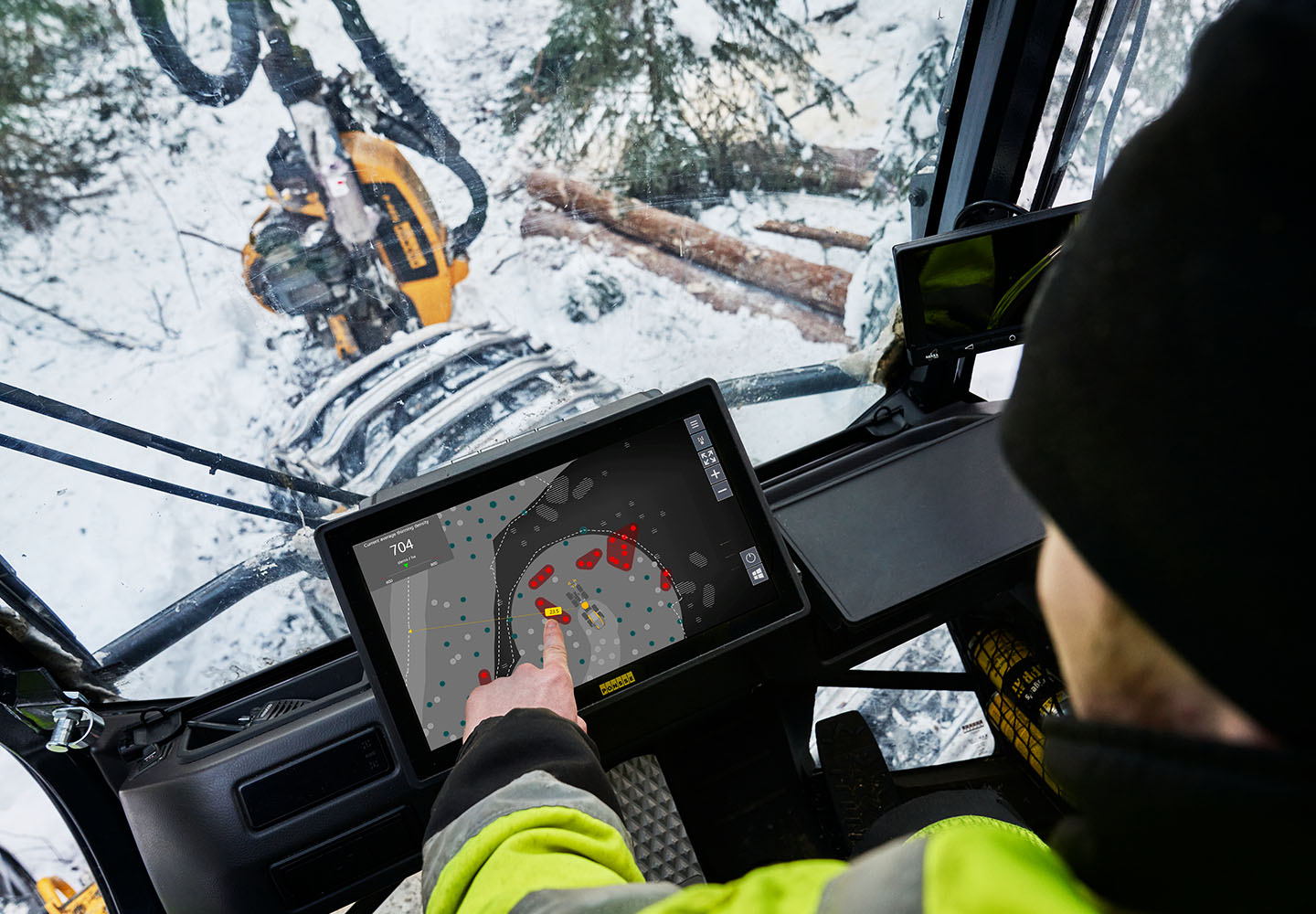
Thinning density assistant: A technological concept that measures thinning density
Our common goal is to preserve forests for future generations. This is why we need to take care of them sustainably and responsibly. Appropriate forest management ensures that forests remain productive throughout their cycle.
THINNING IMPROVES THE QUALITY OF TREES
The profession of a forest machine operator is both responsible and demanding. Operators must be skilled in tree species, machine operation and technology, as well as work planning. They must also have knowledge of the Forest Act, the Nature Conservation Act and other criteria presented by forest certifications, all of which guide harvesting activities. Thinning plays a significant role in forest productivity. This is why forest machine operators need to know what trees to leave standing and what to remove. Technologies are being developed to help operators make these selections and decisions. Last autumn, we presented the Thinning Density Assistant, a technological concept which is not yet commercially available, but is being studied and tested actively.
TECHNOLOGY IDENTIFIES TREES AND GENERATES A TREE MAP
The concept uses the lidar technology to identify trees around the machine and generate a tree map of the logging site. The technology draws an image of the exact location of the machine relative to trees and the adjacent trail on a computer screen.
“As the system does not select any stems for processing, the forest machine operator’s expertise will still be needed in the future,” says Markku Savolainen from Ponsse.
With the technology being developed, the number of standing trees can be measured for the first time in addition to felled trees. The data collected helps operators achieve the correct and best possible thinning density for forest management, which is also documented.
“A stand-specific stem density – stems per hectare – is given for the system, which the system then starts to teach the operator. As the system operates in real time, no calculations are made afterwards, and the operator sees the situation as it is. The thinning density can be checked on the Opti screen during normal operations,” says Savolainen.
When the operator drives the machine forward on the trail, the view will be updated with new stems. If there is another trail next to the machine, the Thinning Density Assistant shows its location and the exact distance between the two trails. As a result, the system also guides the operator if the distance between trails is too long or short.
Markku Savolainen, Product Manager, machine automation.
THINNING DENSITY ASSISTANT
The Thinning Density Assistant concept uses several technologies.
- The lidar technology helps identify the area around the machine and trees close to it.
- The position of the forest machine is identified using satellites.
- The location of the harvester head on the tree map is determined based on sensor data provided by the Active Crane management system. In addition, the system uses PONSSE Scorpion’s numerous sensors.
Forests are kept healthy through well-executed thinning, which increases the amount of carbon dioxide they absorb. Managed forests grow faster and yield higher quality wood.